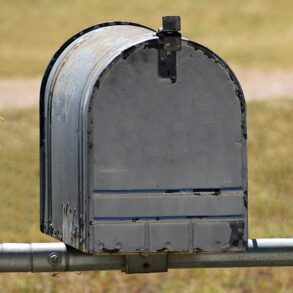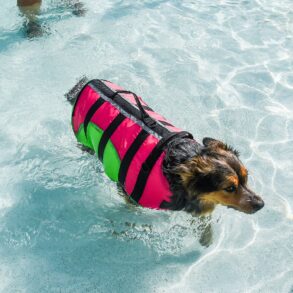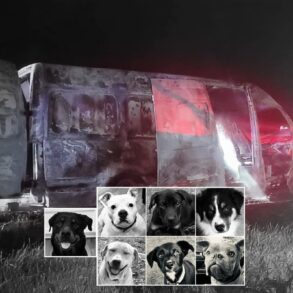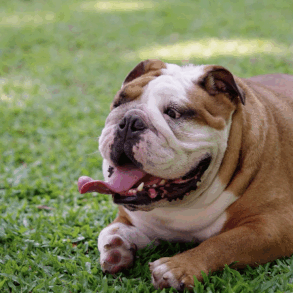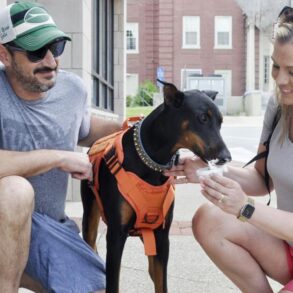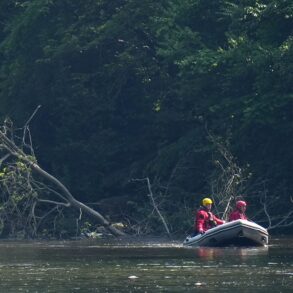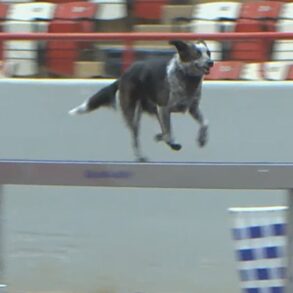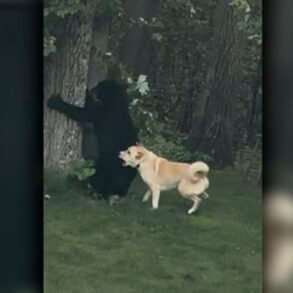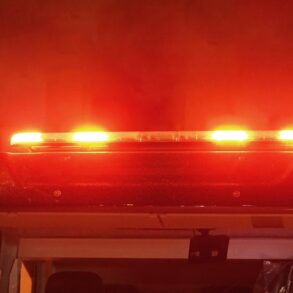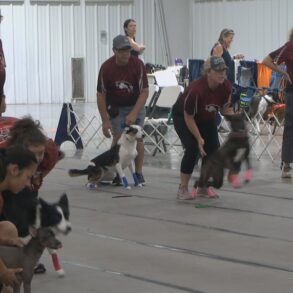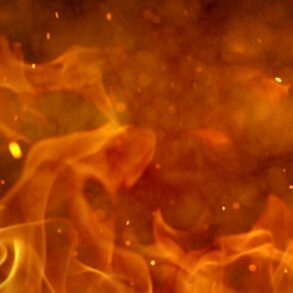Scientists are enlisting some unusual recruits in their efforts to forecast earthquakes, volcanic eruptions and other natural phenomena. They are enrolling thousands of dogs, goats, and other farmyard animals – as well as a wide range of wildlife – in studies that will monitor their movements from space.
The programme uses tiny transmitters that are being fitted to mammals, birds and insects. The detailed movements of these creatures will then be monitored from a dedicated satellite to be launched next year.
The aim is not just to study how they react to imminent natural events like volcanic eruptions but to gain new insights into migration, the spread of diseases among animals and the impact of the climate crisis, say researchers.
“Ultimately, we hope to launch a fleet of around six satellites and establish a global observation network that will not only provide details of wildlife movements and animal health across the planet but reveal how creatures respond to natural phenomena like earthquakes,” said the project leader, Martin Wikelski, of the Max Planck Institute of Animal Behaviour in Germany.
The value of studying tagged animals in this latter area has already been demonstrated in early experiments in Sicily on the slopes of Mount Etna, said Wikelski last week. “We have found the behaviour of goats is pretty good at predicting large volcanic eruptions.”
Sensors have shown the animals become nervous before an eruption and refuse to move to higher pastures that they would normally be happy to visit. “They know beforehand what is coming. We don’t how they do it, but they do,” said Wikelski.
Similarly, researchers have monitored dogs, sheep and other farm animals on the Abruzzo mountains outside Rome and found that they also reacted in ways that predicted seven out of eight major earthquakes in the region over the past 12 years.

Stories of animals behaving oddly before earthquakes or eruptions are not new. The Greek historian Thucydides claimed that rats, dogs, snakes and weasels deserted the city of Helice just before an earthquake struck in 373BC.
Similarly, the 1975 Haicheng earthquake in China occurred after snakes and rats were witnessed leaving their burrows.
Why these animals behaved this way is less clear. “During the build-up to an earthquake, tectonic plates slide across each other under enormous pressures, and that throws out ions from the rocks into the air. The animals may be reacting to that,” said Wikelski, the founder of the International Cooperation for Animal Research Using Space (Icarus), an international collaboration involving teams of scientists across the globe.
Icarus has become possible because of a revolution in tagging technology. Tiny digital transmitters – using small lithium batteries – and cheap and plentiful minuscule GPS devices have made it possible to make tags that are only a few grams in weight.
“We are going from where we couldn’t really track most vertebrate species on the planet to flipping it,” Michigan University ecologist Scott Yanco told MIT Technology Review. “We are now able to track most things.”
Understanding how creatures react to geological changes is only one area of interest in that revolution, added Wikelski. “For instance, we can survey wildlife health from space,” he said.
after newsletter promotion
An example is provided by electronic ear tags – fitted with tiny 30g accelerometers – that have been attached to wild boar. From changes in an animal’s movements, these show that if a boar develops African swine fever – a highly contagious virus – it spreads easily between wild boar and domestic pigs.
Knowing when a disease outbreak occurs in the wild could be important for curbing the disease’s impact on farms, say researchers. “This is a gamechanger for wildlife disease monitoring,” said Kevin Morelle, a scientist based at the Max Planck Institute.
The technology should also help scientists to understand the processes that drive migrations. Transmitters have been fitted to creatures as small as death’s-head hawkmoths, and their movements could soon reveal the mysteries that lie behind the 2,000-mile migrations they make between Europe and Africa every year.
“Similarly, we will be able to study animal populations to determine how they are responding to habitat changes triggered by global warming,” said Wikelski.
Icarus had originally been scheduled to be in full operation several years ago when the team began working with Russian scientists to use a radio telescope on the International Space Station to monitor tagged animals. “After the invasion of Ukraine we decided to halt that cooperation,” said Wikelski.
As a replacement, the team has built a small satellite called the Icarus CubeSat, which is set for launch next year. “After that, we will scale up our operations until we have around six CubeSats and a permanent system for monitoring animals as they move and migrate across the world,” said Wikelski. “That should provide us with a massive amount of data about the way animals behave.”
This post was originally published on this site be sure to check out more of their content.







